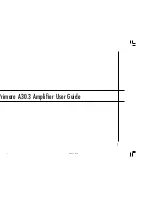
41
Tuning Solutions Memory
To facilitate very rapid frequency changes, tuning solutions are stored in memory and recalled when returning to
that frequency. Settings are recalled almost instantly when returning to that frequency later.
The spectrum from 1.8 through 54.2 MHz is divided into various frequency segments. Successful tune settings
are stored for each band segment. Memory is allocated for 31 settings per frequency segment.
When starting a tune operation for a new frequency segment, the ATU first tries settings in the nearest frequency
segments that do have tuning data for the antenna connector in use. See
ANTENNA ENABLE
and
ANTENNA
PREFER
menu items.
The Tuning Segments
Since retuning is normally required over a narrower frequency range on the lower frequencies to maintain a low
SWR, lower frequencies have narrower segments assigned as follows:
•
Below 4.8 MHz the segments are 10 kHz wide.
•
From 4.8 MHz through 26 MHz the segments are 20 kHz wide.
•
From 26 MHz to 38 MHz the segments are 100 kHz wide.
•
From 38 MHz to 60 MHz the segments are 200 kHz wide.
The center frequencies for each segment are listed in the Appendix.
Amplifier Cooling
CAUTION
Using an external fan on top of the KPA1500 RF Deck is not recommended and may damage the
amplifier. Although the external fan will cool the heat sink, it may delay or prevent the amplifier's fans
from turning on. This is a problem because the KPA1500 fans cool both the heat sink and the interior of
the amplifier.
Due to power levels in the amplifier, many components on the PC boards require cooling, including low-pass
filter inductors, relays and high wattage resistors in the TR switch and attenuator.
Remember, the amplifier heat sink will become warm or even hot but is rated to 110
°
C maximum.
Fan speed increases as the temperature increases. Excessive temperature will trigger a hard fault, protecting the
amplifier.
External Power Supply
The external power supply provides 50 VDC, 12 VDC, and 12 VAC to the amplifier.















































